A black panther has been photographed in the African wilderness by a human for the first time in more than 100 years, with the stunning images showing the cat's piercing eyes in the darkness of night.
Photographer Don Heyneke spent over 240 hours in the Kenyan bush seeking out the rare animal. Black panthers—or melanistic leopards—have a condition that causes their body to produce an excess of black pigment, making their fur darker. According to National Geographic, about 11 percent of leopards have the condition.
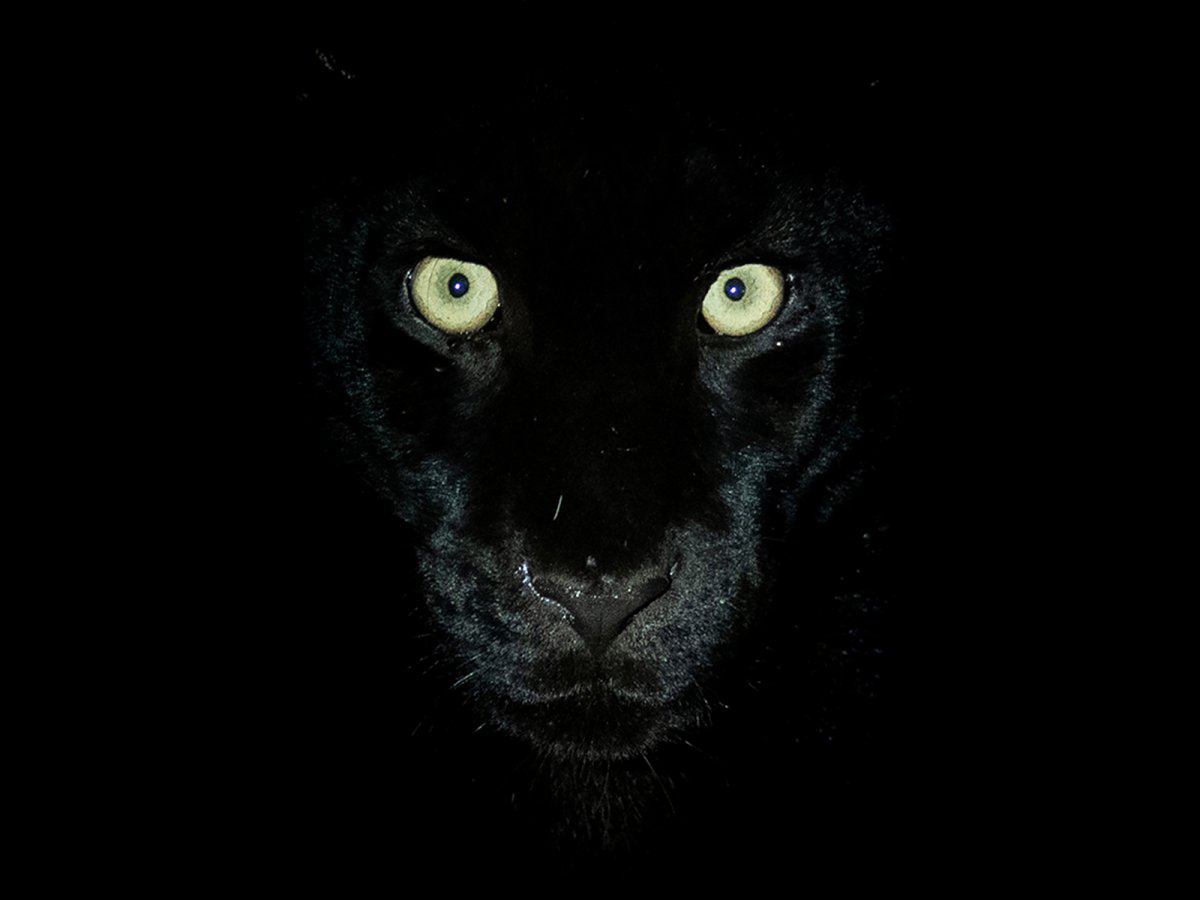
Sightings of melanistic leopards are incredibly rare. They hunt at night and so, with their dark coats, are almost impossible to spot. The only photographs we have of them tend to be taken with camera traps.
Heyneke, who is also a private wilderness guide and co-founder of Escape Safaris Co, had been tracking the black panther with the help of local Samburu people. They were based at the Laikipia Wilderness Camp, central Kenya, and searching an area spanning around 20,000 acres.
"When we got our first glimpse of the black female it was unbelievable, I just sat there and I didn't even think about picking up my camera," Heyneke told Magnus News Agency.
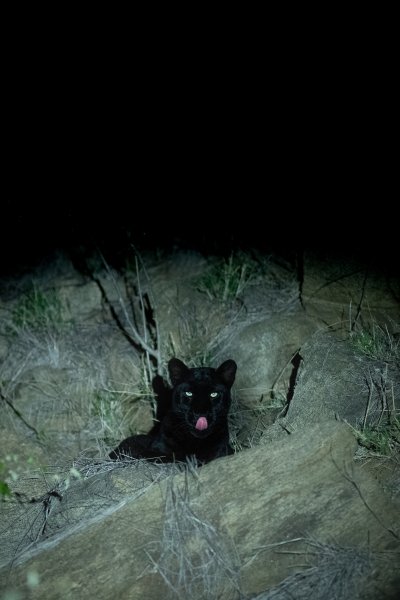
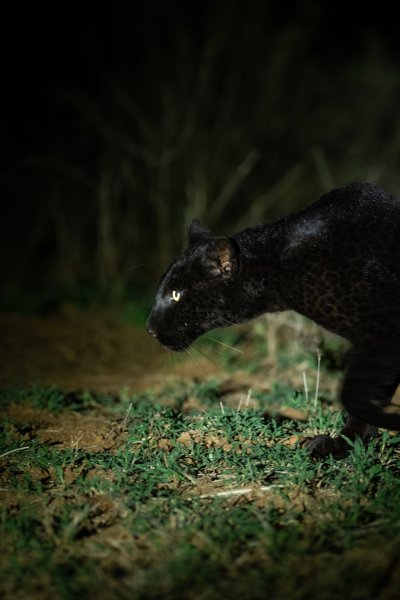
"I just stared with my binoculars watching her and it was just the most ridiculously amazing thing. She is all black so she looks silhouetted as it gets dark, but she turned towards us and looked at us and all you could see were those piercing eyes.
"As soon as I saw her staring back at me, I thought that's the most incredibly beautiful thing I've ever seen and something that I never ever thought I would see. We probably had only 15 to 20 seconds, but it felt like two minutes and then she and her mother slinked off and moved into some thick bush and we lost them."
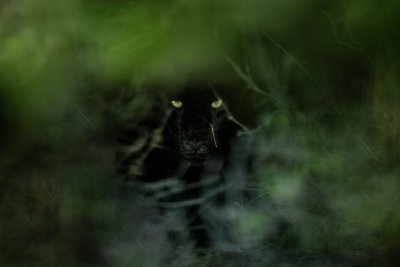

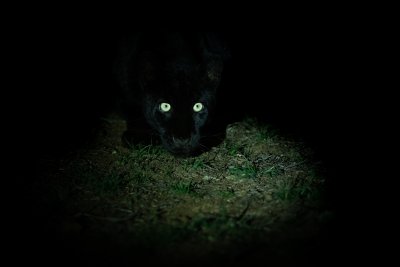

The black panther is estimated to be between 14 and 16 months old. She is still reliant on her mother—who is not a melanistic leopard—but is becoming more independent and has been observed hunting and killing her own food.
Heneke said he was able to take his first photograph of the young female a few days after the initial sighting. He added that when he started looking for the elusive creature, he thought he would be lucky to get a shot from a few hundred yards away. "[To capture it in portrait] was something that I never thought would be possible," he said.
The Laikipia Wilderness Camp, where the black panther lives, is beginning to become a tourist destination and the wildlife there are increasingly wary of humans.
"With all the animals being a bit more on edge, we knew that our task with the leopard would be that bit more difficult," Heyneke said. "We knew that if we got in a position to photograph or view the leopard it was always going to be at a distance to begin with."

He and the team gained the leopard's trust by watching her from afar, allowing her to get comfortable with their presence. Slowly, over a number of sightings, they edged closer to gauge her reaction.
"You have to treat the animal with a lot of care," said Heyneke. "Once it doesn't want to be seen, any leopard is going to disappear in a flash and you won't be able to find it. It was just being very gentle and mindful of leopards and their behavior.

"By the last sighting, she was really becoming more comfortable and there was a mutual respect so that she knew we were not there to harm her. And then we had this window into this animal's life that was extraordinary. We were able to spend an hour or two with this rare leopard watching what it does in the natural world."
Work is underway in the Laikipia region to establish a wider conservation area and promote sustainable tourism. There are now anti-poaching and ranger patrols in the area. Heyneke said he hoped the black panther would stay around Laikipia when she leaves her mother, rather than moving to a new territory.

"What I really love about our story is that we went through everything traditionally," he said. "We studied the mother and cub's movements through camera traps, we tracked them, we started to understand where they were moving and at what times, this helped us plot and plan the best opportunity of being at the right place at the right time.
"You need a lot of educated decision making but luck is still probably about 90 percent of your success … It was tough, I must say, and definitely the hardest safari I have ever had."
Uncommon Knowledge
Newsweek is committed to challenging conventional wisdom and finding connections in the search for common ground.
Newsweek is committed to challenging conventional wisdom and finding connections in the search for common ground.
About the writer
Hannah Osborne is Nesweek's Science Editor, based in London, UK. Hannah joined Newsweek in 2017 from IBTimes UK. She is ... Read more





